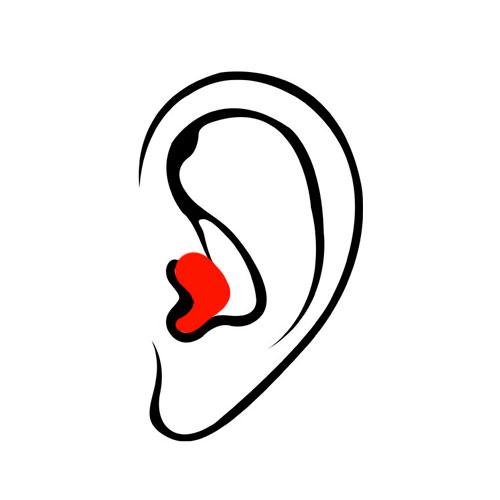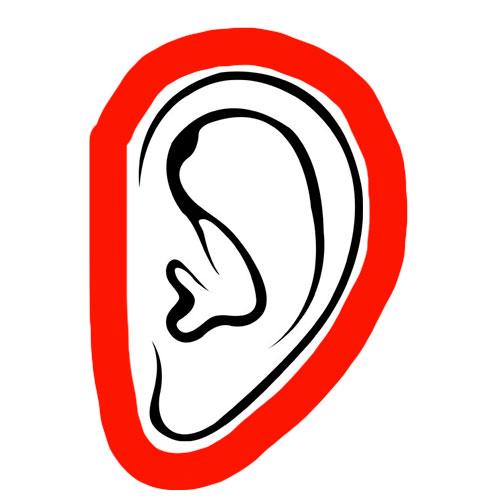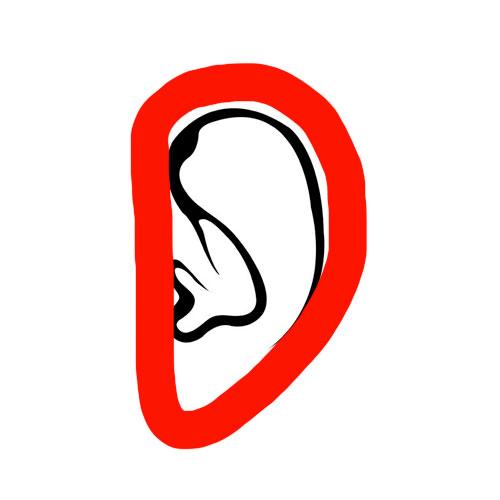Perhaps you have already seen an eight-hour YouTube video with soaring music and pretty pictures? This is probably music called binaural. But what does binaural mean and can I compose this type of music myself?
To create a binaural rhythm you have to play two different tracks with sounds (mostly sine waves) at the left and right extremes, adding and subtracting a defined number of Hz equally on each side.
But what does binaural mean, how do you make binaural music and with what effects? Let’s have a look at that.
What does binaural mean?
The term binaural refers to a sound processing technique that uses two microphones placed in such a way as to simulate human listening and to be able to locate a sound in space. The technique involves recording two separate audio signals, one for each ear, so that when the signals are played back through headphones, the listener has the impression of hearing sound from different directions in space.
What is a binaural rhythm?
Binaural beats are sounds that are designed to be heard through stereo headphones. They consist of different sound frequencies (usually sine waves) that are sent to each ear simultaneously. For example a frequency of 431Hz to the left ear and 433Hz to the right ear.
The brain then combines the two signals to create a third frequency (supposed to be the frequency between the two), thus creating a sound illusion.
What are the benefits of binaural rhythms?
The benefits of binaural rhythms are not yet well understood, but some studies suggest that they can help reduce anxiety, improve concentration and memory, as well as relieve pain, and more.
Although not yet conclusively proven, binaural beats are becoming increasingly popular with those seeking to improve their mental and physical well-being.
However, it is important to note that people with epilepsy or a history of seizures should not listen to binaural rhythms, as this may trigger seizures.
It is also important not to use binaural beats as a primary treatment for mental or physical health problems, but rather as an adjunct to other treatments recommended by a health care professional.
How do I compose binaural music?
The key to composing binaural music is knowledge of sound processing techniques. It is important to understand the effects of phase shifting, filtering and panning to create sounds that can be placed in a 3D sound space.
Music production software such as Ableton Live, Logic Pro X or FL Studio offer advanced sound processing tools for creating binaural effects. But there are also specialized plugins for modifying your tracks to give them a 3D spatialization effect (see below).
You can compose your music and apply binaural effects to each track. It is better not to overload the song with too many tracks and to leave only the most important instruments.
Here is a list of 5 VST plugins to create binaural effects:
- Waves B360 Ambisonics Encoder allows you to encode audio signals in ambisonic format, which can be used to create immersive binaural effects.
- DearVR Pro offers a range of binaural processing tools, including panning and spatialization effects to create a three-dimensional listening experience.
- Harpex-X is designed for 3D audio production and offers a range of binaural processing tools to create spatialization effects.
- O3A Core is specifically designed for 3D audio production and offers a range of binaural processing tools for creating spatialization effects.
- SRS Labs HD Audio Lab offers a range of advanced audio processing tools, including binaural effects to enhance the listening experience.
Note that these VST plugins are not free and require a license to use. Some of them can be quite expensive, especially for quite specific use.
Idea 💡: The simplest approach to making binaural music is to compose a quiet song and adding a sine-based binaural rhythm to it, and keeping the song simple by using pads or soft synths with a light reverb.
How do I create a binaural rhythm?
To create a binaural rhythm, you need to play two different tracks with sounds (usually sine waves) at the left and right extremes, adding and subtracting a set number of Hz equally on each side.
The intention is to have a virtual frequency in the middle, supposedly simulated by your brain.
Here’s how to do it:
- Choose a target frequency for your binaural rhythm (e.g. 432Hz)
- In your sequencer, add a track completely to the left with a sine wave frequency and remove 1Hz or more from the target frequency (431Hz)
- Add another track completely to the right with another frequency, this time adding 1Hz or more (433Hz)
When listening, you should hear a vibration of the sound, this is the effect we are looking for.
Here is the result:
What type of headphones to use to compose binaural music?
When composing or listening to binaural music, it is important to use quality headphones, because even high-quality speakers will not allow you to enjoy binaural listening.
Headphones are essential for creating a three-dimensional listening experience. When you listen to binaural music through headphones, each ear receives a slightly different sound signal. This creates a sense of immersion in the sound environment. It is recommended that you use in-ear headphones for the best sound immersion results.
In addition, the use of noise-canceling headphones can also enhance the experience of listening to binaural music. This is because earmuffs reduce unwanted background noise that can interfere with the binaural sound signal. This allows you to better enjoy binaural music and focus on the desired sounds.
It is also important to note that the quality of the binaural music recording can affect the listening experience. It is best to choose high quality audio files to ensure an optimal listening experience. Finally, it is advisable to find a quiet, comfortable place to listen to binaural music to maximize the sound immersion effect.
What types of headphones or earphones should I use for binaural music?
There are several types of headphones, each with its own advantages and disadvantages. Their prices can also vary greatly depending on the quality of sound reproduction and the technologies used.
Let’s take a look at the main types of earphones and headphones available on the market.
In-ear headphones

In-ear monitors are headphones that fit inside the ear. They are often small and lightweight, making them easy to carry.
In-ear monitors also provide good noise isolation, which means they block out unwanted background noise. This can help improve the experience of listening to binaural music.
However, some users may find that in-ear headphones are not comfortable to wear for long periods of time.
Here are some in-ear headphone recommendations:
- Sennheiser Momentum True Wireless 2 – These headphones offer excellent sound with deep bass and clear highs. They are also comfortable to wear for a long time and have good battery life. However, they don’t block out noise very well.
- Bose QuietComfort Earbuds – Excellent earbuds with effective noise reduction. They are also comfortable to wear and have good battery life. But they are more expensive than some other earbuds and may not be practical to carry around.
- Sony WF-1000XM4 – With their great sound with effective noise reduction, they are also comfortable to wear for a long time and have good battery life. Nevertheless, they don’t block noise very well.
- Apple AirPods Pro – Apple’s earphones offer good quality sound with effective noise reduction. They are also comfortable to wear and have good battery life. But they may not suit all users in terms of comfort and don’t block noise very well.
- Jabra Elite 85t – These headphones offer good quality sound with effective noise reduction. They are also comfortable to wear and have good battery life. However, their design may not be suitable for all users and they don’t block noise very well.
Around-the-ear headphones

Around-the-ear headphones are headphones that completely surround the ears. They are often larger and heavier than in-ear headphones, but offer better sound quality.
Around-ear headphones can also be used to reduce unwanted background noise, which can improve the binaural music listening experience.
However, around-ear headphones can be less convenient to carry around than in-ear headphones, and some users may find them less comfortable to wear for long periods of time.
Here’s a selection of the 5 best around-ear headphones:
- Bose QuietComfort 35 II – With excellent noise reduction, outstanding sound quality and high wearing comfort, the QuietComfort 35 are however relatively expensive and their design may not appeal to everyone.
- Sony WH-1000XM4 – With exceptional sound quality, effective noise reduction and impressive battery life, these headphones are an excellent choice. However, they are a bit more expensive than some other headphones and may not be practical to carry around.
- Sennheiser Momentum 3 Wireless – These headphones offer exceptional sound quality and effective noise reduction. They are also comfortable to wear for a long time. They are a bit heavier than some other headphones and have average battery life.
- Bowers & Wilkins PX7 – With their outstanding sound quality and effective noise reduction, these headphones are a great choice for audiophiles. They’re also comfortable to wear for a long time. But they are relatively expensive and their design may not appeal to everyone.
- AKG N700NCM2 – These headphones offer exceptional sound quality and effective noise reduction. They are also comfortable to wear for a long time and their battery life is impressive. However, their design may not appeal to everyone and their noise reduction may not be as effective as some other headphones.
On-ear headphones

On-ear headphones are headphones that sit on top of your ears. They are often lighter than on-ear headphones, but offer slightly lower sound quality.
On-ear headphones may be more convenient to carry than around-ear headphones, but may not provide as much sound isolation.
Some users may also find on-ear headphones less comfortable to wear for long periods of time.
Here is a selection of the top 5 on-ear headphones:
- Sennheiser HD 660 S – Pro headphones with high wearing comfort. They are also easy to carry and store. However, they are relatively expensive and their sound isolation is average.
- Beyerdynamic DT 990 Pro – Another pro headset with high wearing comfort. They are also relatively affordable. The bad points being that their design may not appeal to everyone and their sound insulation is not very effective. We will prefer its little brother, the closed headset Beyerdynamic DT 880 Pro.
- Audio-Technica ATH-M50x – Excellent quality and high wearing comfort. They are also relatively affordable and have good noise isolation. However, they may not be suitable for all users in terms of comfort and can feel a bit heavy.
- Sony WH-CH700N – Good sound and being affordable. The Sony WH-CH700N have a good battery life. However, their wearing comfort can be average and their sound quality is not as good as some other headphones.
- AKG Y50BT – Decent sound quality and high wearing comfort. They are also affordable and have good battery life. However, their build quality can feel a bit flimsy and their sound can lack clarity at high volumes.
Earmuffs
Noise cancelling headphones are headphones that use noise cancelling technologies to block out unwanted background noise.
They can be used with any type of earbuds or headphones and can greatly enhance the binaural music listening experience.
However, noise-canceling headphones can be more expensive than other types of headphones and may not be practical to carry around.
Some users may also find them less comfortable to wear for long periods of time.
Here’s a list of the top 5 noise-canceling headphones with their strengths and weaknesses:
- Sony WH-1000XM4 – The best noise cancelling headphones on the market, with outstanding noise reduction, high quality sound and impressive battery life. However, it is expensive and might not be practical to carry around.
- Bose QuietComfort 35 II – Another excellent choice, with effective noise reduction and high-quality sound. It is also comfortable to wear for a long time. However, it’s a bit more expensive than some other headphones and its battery life is average.
- Sennheiser Momentum 3 Wireless – These headphones offer excellent sound quality with effective noise reduction. They are also comfortable to wear for a long time. However, their battery life is average and their design may not appeal to everyone.
- Bowers & Wilkins PX7 – Very good sound reproduction and effective noise reduction, an excellent choice for audiophiles. However, they are relatively expensive and their design may not appeal to everyone.
- Jabra Elite 85h – Excellent sound reproduction and effective noise reduction. They are also comfortable to wear for a long time and have good battery life. However, their minimalist design may not appeal to everyone and their noise reduction may not be as effective as some other headphones.
Conclusion
Binaural beats are a potentially interesting tool for improving our mental and physical well-being, but their effectiveness is not yet conclusively proven. However, for those interested in using these rhythms, it is possible to compose binaural music using music production software and specialized plugins. It is important to note that to fully enjoy the binaural experience, it is recommended to use quality in-ear headphones and noise-canceling headphones to reduce background noise.
Ultimately, the use of binaural beats should be considered as an adjunct to other treatments recommended by a health care professional, rather than as a primary treatment for mental or physical health issues. With the right tools and approach, binaural music can be an immersive and relaxing experience that improves our overall well-being and quality of life.

